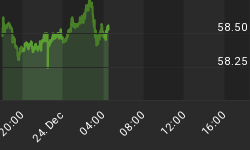Chart 1 shows what is driving the projections of federal spending (and, implicitly, the national debt) in the upcoming 11 fiscal years - mandatory federal outlays and interest on the debt. What is driving up mandatory outlays is spending on retirees - Medicare and Social Security. The primary reason Medicare and Social Security expenditures will be rising so rapidly is that our retiree population will be rising rapidly (see Chart 2).The real economic implication of this sharp increase in government spending on retirees is that the U.S. economy will not be able to grow as rapidly in the future as otherwise because of an adverse effect on the productivity of the future labor force. (In addition, as also shown in Chart 2, growth in the labor force is projected to slow.) As more of our finite economic resources are transferred to retirees - a segment of the population no longer producing goods and services, just consuming them - there will be fewer resources left over and available to increase the productivity of the future labor force. That is, there will be fewer resources available to businesses to invest in state-of-the-art capital goods and fewer resources available to provide for a quality education of the future labor force. New capital goods and a quality education are key positive drivers of labor productivity.


Even if we did not have Medicare and Social Security programs, the U.S. economy still would be facing slower growth than otherwise because of our rapidly aging population. Whether paid for by the government or retirees, medical expenditures for retirees will be rising rapidly in the U.S. because of demographics. Large quantities of resources will be used for the health care of retirees regardless of who pays for it. As mentioned above, this will deprive the economy of resources that otherwise could have been used to enhance the productivity of the future labor force.
Slower productivity growth, all else the same, implies a slower rate of increase in an economy's standard of living. The adverse effect on the future growth in the standard of living of U.S. residents could have been avoided or alleviated if we had saved more in the past in preparation for this demographic event. By saving more, we could have grown faster in the past and exported more of this production. In the event, we would then have been in a position to import more goods and services in the future. Some of these imported goods might have been productivity-enhancing capital goods, which would have allowed our future workers to produce more. Some of these imported goods might have been goods consumed by our retirees, thus leaving more of our resources available to provide a quality education for our children and grandchildren. But alas, as shown in Chart 3, our net national saving rate has been trending lower since the early 1980s, with one exception - the second half of the 1990s when our federal budget was moving toward balance. Oh well, we did have fun, didn't we?

Does It Make Economic Sense to Strive for a Balanced Federal Budget?
When business make capital expenditures in order to enhance future profitability, do they typically fund all of these capital expenditures out of current income? No. As shown in the chart below, it is far more typical that the dollar amount of corporate capital expenditures exceeds current net income. That is, capital outlays typically are more than 100% of profits after taxes and dividends. By borrowing or issuing equity to fund current capital outlays, corporations are assuming that these capital outlays will increase future profits enough to pay the principal and interest on borrowed funds, leaving enough left over to maintain or increase dividends and perhaps fund some other capital outlays or acquisitions.

If it makes sense for corporations to borrow to fund capital expenditures, why does it not make sense for the federal government to do so as well? By the government making investments in physical capital (infrastructure) and human capital (education), the economy's future growth rate would be expected to be enhanced. This, in turn, would imply higher future tax revenues (even, or especially, without higher tax rates) to pay the interest and principal on the debt issued to fund the government capital expenditures. An argument could be made that military hardware expenditures - nuclear subs and cruise missiles - are government capital expenditures. By deterring military attacks from enemies, we are able to go about our daily business of producing goods and services uninterrupted. So, rather than trying to balance the overall federal government budget, would it not make more sense to bring into balance the operating expenses of the federal budget with current revenues and have the Treasury borrow to fund federal capital expenditures?















